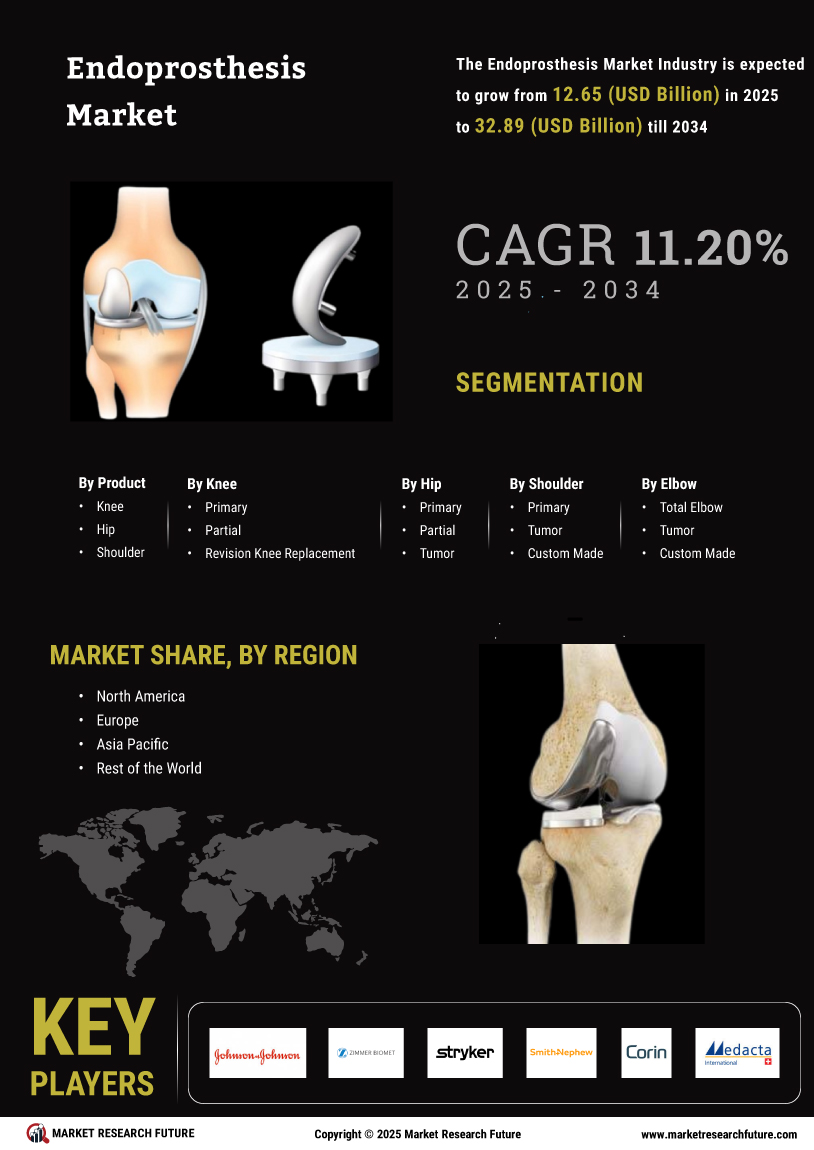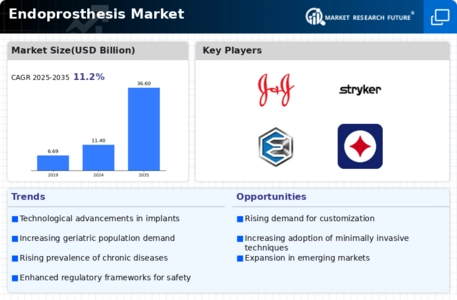The Endoprosthesis Market is characterized by a dynamic competitive landscape, driven by technological advancements, an aging population, and increasing incidences of orthopedic disorders. Major players such as Stryker (US), Zimmer Biomet (US), and DePuy Synthes (US) are at the forefront, each adopting distinct strategies to enhance their market presence. Stryker (US) emphasizes innovation through substantial investments in R&D, focusing on developing advanced surgical instruments and robotic-assisted technologies. Meanwhile, Zimmer Biomet (US) has been pursuing strategic partnerships to expand its product offerings and enhance its global reach, particularly in emerging markets. DePuy Synthes (US) appears to be concentrating on digital transformation, integrating AI and data analytics into its product development processes, which collectively shapes a competitive environment that is increasingly reliant on technological prowess and strategic collaborations.
Key business tactics within the Endoprosthesis Market include localizing manufacturing to reduce costs and optimize supply chains. The market structure is moderately fragmented, with several key players exerting considerable influence. This fragmentation allows for a variety of product offerings, yet the collective strength of these companies fosters a competitive atmosphere where innovation and operational efficiency are paramount.
In November 2025, Stryker (US) announced the launch of its latest robotic surgical system, which is designed to enhance precision in orthopedic surgeries. This strategic move is significant as it not only reinforces Stryker's commitment to innovation but also positions the company to capture a larger share of the growing demand for minimally invasive surgical solutions. The introduction of this technology is likely to enhance surgical outcomes and improve patient recovery times, thereby solidifying Stryker's competitive edge.
In October 2025, Zimmer Biomet (US) entered into a partnership with a leading AI firm to develop predictive analytics tools for orthopedic surgery. This collaboration is indicative of the company's strategic focus on integrating cutting-edge technology into its product offerings. By leveraging AI, Zimmer Biomet aims to enhance surgical planning and improve patient outcomes, which could potentially lead to increased market share and customer loyalty.
In September 2025, DePuy Synthes (US) unveiled a new line of personalized implants that utilize 3D printing technology. This initiative reflects the company's commitment to customization in orthopedic solutions, catering to the unique anatomical needs of patients. The strategic importance of this development lies in its potential to differentiate DePuy Synthes in a competitive market, as personalized solutions are increasingly sought after by healthcare providers.
As of December 2025, current competitive trends in the Endoprosthesis Market are heavily influenced by digitalization, sustainability, and the integration of AI technologies. Strategic alliances are becoming more prevalent, as companies recognize the value of collaboration in driving innovation and enhancing product offerings. Looking ahead, competitive differentiation is likely to evolve from traditional price-based competition to a focus on technological innovation, supply chain reliability, and sustainable practices. This shift underscores the importance of adaptability and forward-thinking strategies in maintaining a competitive advantage.

















Leave a Comment